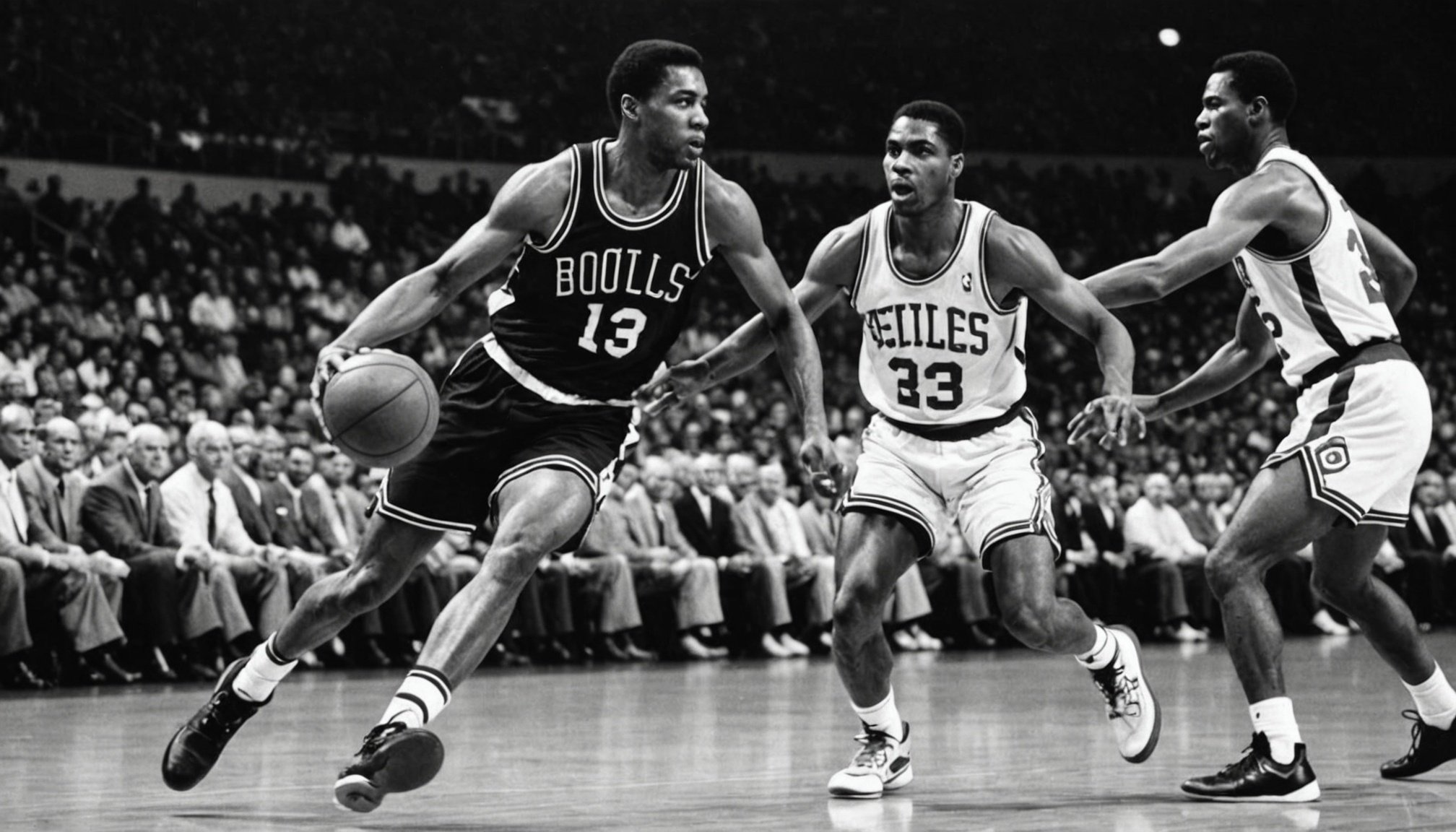Basketball, a dynamic sport played worldwide, has evolved significantly since its inception. What started as a simple game has transformed into a thrilling spectacle, captivating millions of fans and players alike. Understanding the history and evolution of basketball provides insight into the various factors that have shaped the game today. In this article, we will explore the critical influences that have contributed to modern basketball, tracing its roots from the early days to the contemporary NBA, and examining the roles of various teams and players along the way.
The Birth of Basketball: Naismith’s Vision
Basketball was officially created in December 1891 by Dr. James Naismith, a physical education instructor at the International YMCA Training School in Springfield, Massachusetts. Naismith sought to develop a game that could be played indoors during the winter months, combining athleticism and teamwork. He devised a set of rules and hung peach baskets at either end of a gymnasium, using a soccer ball as the first basketball. The objective was simple: players had to throw the ball into the opposing team’s basket to score points.
Also read : How can a strong work ethic influence a basketball player’s career trajectory?
The original game had only 13 rules, which were simple and straightforward. For instance, players could not run with the ball, and physical contact was limited. Over time, these rules evolved, but Naismith’s foundational principles of teamwork, agility, and strategy remained intact. The game quickly gained popularity, leading to the establishment of college competitions and local leagues. The influence of Naismith’s vision laid the groundwork for the future of basketball, marking the beginning of a new sport that would captivate audiences worldwide.
In the years following its inception, basketball began to spread rapidly across the United States. YMCA programs adopted the game, and numerous colleges started forming teams. The early 20th century saw the emergence of organized leagues, which contributed to the professionalization of the sport. As more teams were established, the competitive nature of basketball grew, paving the way for future developments that would further shape the game into what we recognize today.
Also to discover : How do officiating standards differ between professional and amateur basketball games?
The Rise of Professional Basketball
As basketball gained traction in colleges and local communities, the need for a national league became evident. This led to the formation of the Basketball Association of America (BAA) in 1946, which later merged with the National Basketball League (NBL) to form the National Basketball Association (NBA) in 1949. This merger marked a significant turning point in the history of basketball, establishing a professional league that would elevate the sport to unprecedented heights.
The NBA’s early years were characterized by fierce competition among teams, but it wasn’t until the 1980s and 1990s that basketball truly entered the mainstream. Superstars like Magic Johnson, Larry Bird, and Michael Jordan captivated fans with their extraordinary talent, transforming the NBA into a global phenomenon. The league expanded, incorporating international players and diversifying its talent pool. This period of growth solidified the NBA’s reputation as the premier basketball league, setting the stage for future generations.
Moreover, the NBA played a pivotal role in shaping the modern game. Rule changes, such as the introduction of the three-point line, altered gameplay dynamics, encouraging teams to adopt new strategies. The emphasis on athleticism and skill led to the emergence of iconic players who would redefine what it means to excel in the sport. The influence of the NBA cannot be understated, as it has not only popularized basketball globally but has also inspired aspiring athletes to pursue their dreams on the court.
College Basketball’s Impact on the Game
While the NBA is often viewed as the pinnacle of professional basketball, college basketball has played a crucial role in shaping the sport as well. The NCAA Men’s Basketball Tournament, commonly known as March Madness, showcases young talent and the competitive spirit of college teams. This annual event has become a cultural phenomenon, drawing millions of viewers and highlighting the game‘s excitement.
College basketball serves as a vital stepping stone for many players aspiring to enter the NBA. It is in college that athletes develop their skills, learn teamwork, and understand the rules of the game on a deeper level. Coaches at the collegiate level often emphasize discipline and strategy, preparing athletes for the rigors of professional basketball. Moreover, college programs have a significant impact on the style of play, with teams adopting different philosophies that influence the overall landscape of basketball.
The NCAA also plays a pivotal role in promoting women’s basketball, which has seen substantial growth in recent years. The establishment of the NCAA Women’s Basketball Championship has provided female athletes with increased visibility and opportunities. The rise of women‘s basketball at the collegiate level has helped challenge stereotypes and promote gender equality in sports, further enriching the overall narrative of basketball as a whole. The college system not only nurtures talent but also plays a critical role in expanding the game’s reach and inclusivity.
International Basketball and Globalization
In the last few decades, international influences have significantly shaped modern basketball. The globalization of the sport has introduced new styles of play, diverse strategies, and a wealth of talent from around the world. The FIBA World Cup and Olympic Games have become important platforms for teams to showcase their skills on a global stage.
Players from various countries have made their mark in the NBA, bringing unique perspectives and playing styles. The likes of Dirk Nowitzki, Yao Ming, and Giannis Antetokounmpo have not only excelled in the league but have also inspired a generation of international athletes. The influx of international talent has led to a blending of styles, combining the finesse of European basketball with the athleticism often seen in American play.
Moreover, the rise of grassroots basketball programs globally has expanded the sport’s reach. Countries like Spain, Australia, and Canada have developed robust youth programs, creating a pathway for young athletes to pursue basketball professionally. The increasing popularity of basketball in these regions highlights the sport’s universal appeal and the shared passion for competition.
As the world becomes more interconnected, basketball transcends borders, fostering camaraderie and understanding among diverse cultures. This globalization not only enriches the game but also embodies the spirit of teamwork and collaboration that Naismith envisioned over a century ago.
The history of basketball is a fascinating journey shaped by numerous influences, from Naismith’s original vision to the modern-day NBA and the global expansion of the sport. The evolution of basketball reflects not only changes in gameplay and rules but also the transformative impact of various teams, players, and cultural dynamics over time.
Today, basketball remains a vital part of the global sports landscape, inspiring millions of fans and athletes alike. The diverse influences that have shaped the game ensure that it continues to evolve, welcoming new talent and innovations while preserving its rich heritage. As we look to the future, the enduring legacy of basketball will undoubtedly continue to inspire generations, uniting people through the love of the sport.











